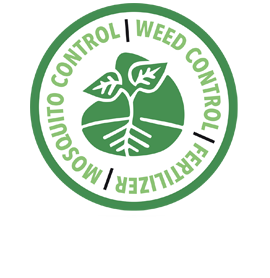As summer fades and fall approaches, it’s time to shift gears from days spent at the lake to prepping your lawn for winter. Fall is a crucial period for lawn care, especially for those of us who want to keep our yards lush and healthy. One of the most important tasks you can tackle in the fall is lawn aeration. Proper care your lawn in the fall can make a significant difference in how your lawn looks come spring. Northern Roots Lawn Care is here with tips to help you get your lawn in top shape for the colder months.
What is Aeration?
Lawn aeration is the process of making holes in the soil to let air, water, and nutrients reach the grass roots. This helps with soil that’s become too compacted, making it easier for your grass and roots grow better and keeping your lawn healthy.
 Benefits of Aeration
Benefits of Aeration
- Reduces Soil Compaction: Soil can get packed down, especially where there’s a lot of foot traffic. Aeration loosens this packed soil, allowing roots to spread out and get nutrients more easily.
- Improves Nutrient Absorption: Aeration creates holes that let fertilizers and nutrients get to the roots more effectively.
- Enhances Water Absorption: With aeration, the soil takes in water better, which helps your lawn stay hydrated and reduces water runoff.
- Promotes Thicker Grass: Stronger roots lead to thicker grass. Aeration helps fill in bare spots and reduces thatch buildup.
Timing & Care
Fall is the best time to aerate your lawn. The cooler temperatures and extra moisture are perfect for grass to recover. Aerate when your grass is still growing well and before the first frost.
Mow your grass a bit shorter than usual before aerating. This makes it easier for the aerator to reach the soil. Water your lawn a day or two before aeration to soften the soil.
After aerating, leave the soil plugs on the lawn. They will break down and add useful organic matter to the soil. Consider fertilizing and overseeding if needed.
Additional Fall Lawn Prep Tips
- Rake Up Leaves: Leaves can cover your grass and cause pests and diseases. Rake or mulch them often to keep your lawn healthy.
- Fertilize: Use a fall fertilizer to give your grass the nutrients it needs to grow strong roots and survive winter. Look for one high in potassium to help with root growth and disease resistance.
- Overseed: If your lawn has bare spots or is thinning, fall is a great time to overseed. The cooler weather and moisture will help new seeds grow before winter.
- Adjust Your Mowing Height: As it gets cooler, set your mower to leave the grass a bit longer. This helps protect the roots and keeps your lawn healthy through the winter.
Let Northern Roots handle your fall lawn prep! Contact us today for aeration and overseeding services – your lawn will thank you come spring!

